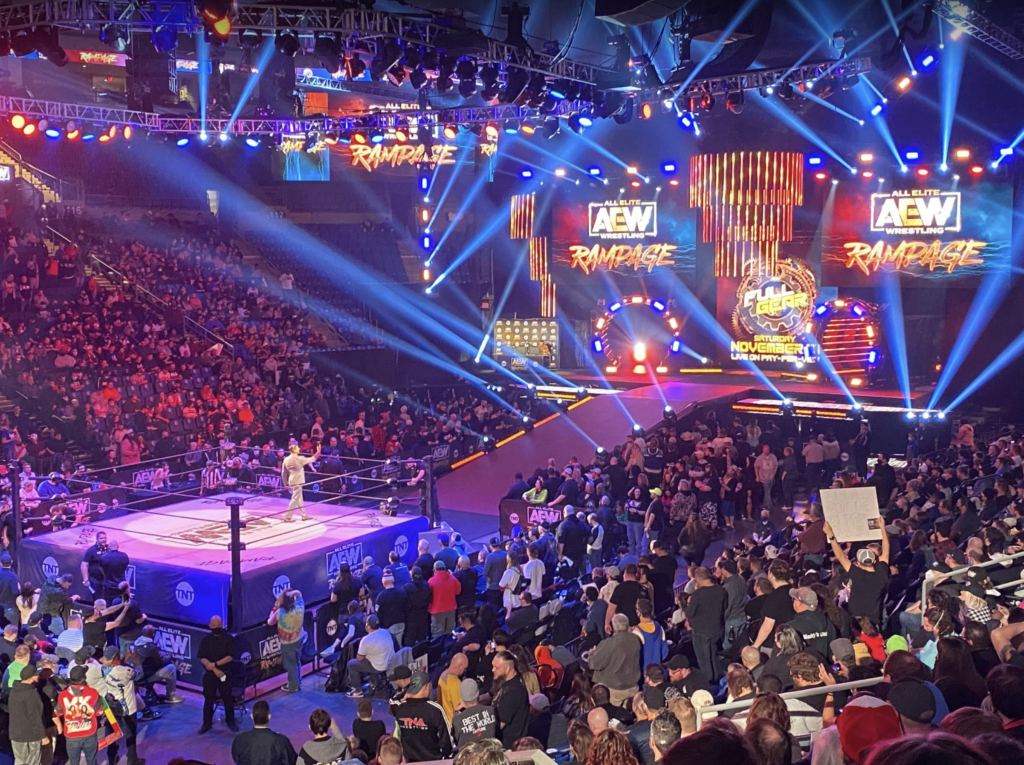Pro wrestling, the world’s strangest art form, recently came back to town
BY: JACOB POLITTE
Managing Editor

Before I get into the real meat of this piece, a bit of background is probably needed.
For the longest time that I can remember, I’ve been a fan of pro wrestling. The earliest memory I have of watching it on television came when I turned on WWE Monday Night Raw when I was 7 years old, but my mom tells me I was watching it even before then. She also told me around that time that none of it was real, which I think was her way of discouraging me from watching it; that plan of hers didn’t work at all. Ever since that fateful night in August 2003 when I watched the daredevil son of a billionaire kick the closest thing to Michael Myers west of the Mississippi into a literal dumpster fire, I’ve been hooked. That last sentence isn’t a typo: that’s something that I actually saw happen on television. When I was 7. Explains a lot, I guess.
Pro wrestling is the most absurd thing ever broadcast. Objectively, it’s stupid. But it’s stupid in the best way: it’s legitmately fun. Some people will say “It’s just a bunch of dudes in underwear who fake fight each other” and that’s not exactly true… some of them wear pants. But if you set aside any preconceived notions and allow yourself to believe in the magical aura, you’d be surprised by how much one can get caught up in the action.
As I grew up with WWE though, something happened: it didn’t grow up with me. For reasons that are far too extensive to recap in an opinion’s section of a college newspaper, I’ll just paraphrase it: WWE has continued to largely dumb down it’s product over the years. As I grew up more and more, WWE’s version of pro wrestling seemingly did the closest thing to a Benjamin Button and aged in reverse. The in-ring athleticism from the competitors evolved into something incredible to watch… but everything other than that was dreadful to consume and dragged their performances down a few notches. It was childish. As a fan of the product, it just wasn’t exciting. It wasn’t even a decent way to waste time.
Since the turn of the century, WWE has been the only significant big player in the industry. It’s become a global juggernaut that has become too big to ever be stopped; the revenue from the organization’s televised (and often controversial) Saudi Arabia shows alone are more than enough to carry the company through the next decade. And despite the fact that the company is literally making insane amounts of money despite not even trying, they’ve cut over 70 wrestlers this year alone, in the midst of a pandemic. It’s an extremely depressing time to be a WWE fan.
Enter All Elite Wrestling (AEW). Created by the owners of the NFL’s Jacksonville Jaguars, and overseen by Tony Khan himself, the promotion has quickly become the biggest alternative and competitor to WWE since 2001. In just under three years, the promotion earned a prime-time slot on cable channel TNT, signed really big names to contracts (including some names that wrestling fans thought they’d never see on such a big stage, or ever again for that matter), and are regularly selling out venues in every city they visit.
I’ve watched AEW since the beginning, and my criticisms are not extensive. They seem to be doing everything right, and that’s why I was stoked to see a show of theirs live and in person. The pandemic delayed it 17 months, but on Friday, Nov. 5, I finally got that chance.
It was well worth the wait.
Wrestling can be extremely fun if you just allow yourself to believe, and if the people around you do too. AEW shows, by and large, are really fun to watch on TV. Being at one live is somehow even more fun. As a fan, you feel like your patience and intelligence is not only appreciated, but rewarded.
The enthusiasm coming out of this show is infectious, and I’d much rather be infected by the enthusiasm that Tony Khan has for his roster and his show than any virus. No matter how old I get, I hope this pro wrestling company continues to be this fun.











